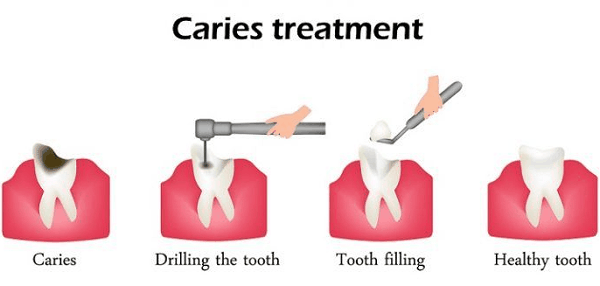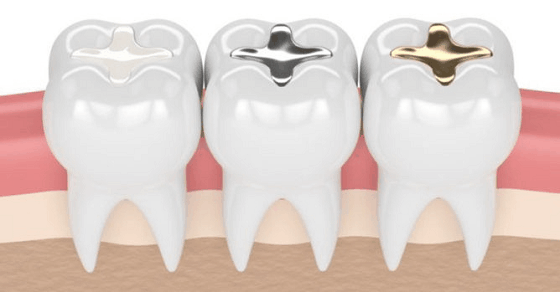To treat a decay your dentist will remove the infected portion of the tooth and then “fill” the area on the tooth where the decayed material was removed.
Fillings are also used to repair injured or broken teeth and teeth that have been worn down from misuse (such as from nail-biting or tooth grinding).
What Steps Are Involved in Filling a Tooth?

First, the dentist will apply a local anesthetic to numb the area around the tooth to be filled. Next, a drill out the infected area using air abrasion instrument, or laser. The choice of instrument depends on the individual dentist’s practice and the extent of the decay.
Next, your dentist will examine or test the area to determine if all the corrosion has been removed. Once the decay has been removed, the dentist will prepare the place for the filling by cleaning the cavity of bacteria and debris.
If the decay is near the root, your dentist may first put in a liner made of glass ionomer, composite resin, or other material to protect the nerve. Usually, after the filling is in, your dentist will finish and polish it.
Several further steps are required for tooth-colored fillings and are as follows. After your dentist has removed the decay and cleaned the area, the tooth-colored material is used in layers.
Next, a special light that “cures” or sets each layer is applied. When the multilayering process is finished, the dentist will shape the composite material to the desired result, trim off any excess material, and polish the final restoration.
What Types of Filling Materials Are Available?

Today, many kinds of dental filling materials are available. The options can be gold; porcelain; silver amalgam (which consists of mercury mixed with silver, tin, zinc, and copper); or tooth-colored, plastic, and materials called composite resin fillings. There is also a substance that contains glass particles and is known as glass ionomer.
This substance is used in ways similar to the use of composite resin fillings.
The area and extent of the decay, cost of filling material, your insurance coverage, and your dentist’s advice assist in determining the type of filling best for you.
Metals:
Gold or silver amalgam are the most popular metals used for a cavity filling. Gold fillings can cost as much as 10 times more than silver amalgam fillings, but some people prefer the appearance of gold to silver fillings if they require the durability of metal vs. a less-durable composite material.
Some people don’t like the idea of metal fillings, but metal fillings can last as long as 10-15 years before they need to be replaced.
Composite Resin:
Composite resin fillings are made of tooth-colored material. They cost more than amalgam fillings, but the cost may be worth it if your cavity filling is on one of your front teeth. Composite fillings are used less often on back teeth.
Ceramic:
A ceramic cavity filling (usually made of porcelain) is tooth-colored, and it may be fewer chances to get stained over time than a composite cavity filling. But the price is a factor—a ceramic filling can be nearly as expensive as a gold cavity filling.
Glass Ionomer:
This blend of acrylic and glass is used to create a cavity filling that releases fluoride to help shield the teeth. But a glass ionomer cavity filling is short durable than other types and may need to be replaced in as little as five years.





